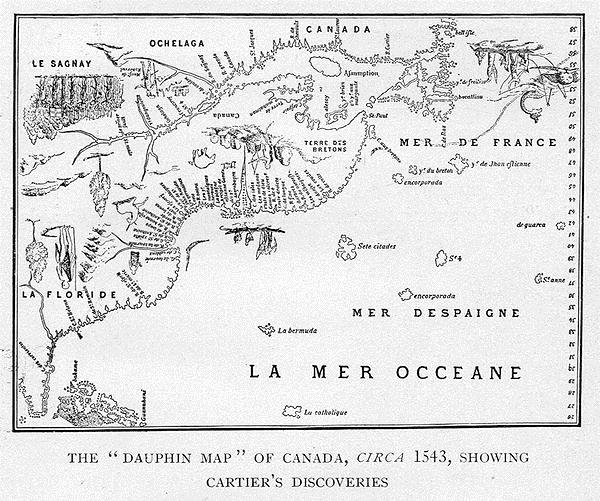“It’s not hard to make decisions when you know what your values are.” – Roy E. Disney

Values can sometimes seem like the stepchild of strategic planning. The guts of a strategic plan can include a results-oriented vision translated into specific objectives, measures and initiatives that will support it.
Values, on the other hand, can feel a bit fuzzy. Often, people think of values as a “do-gooder” thing. The exercise of defining values may feel like an exercise in identifying lofty sentiments rather than guiding day-to-day behavior.
Edgar Schein, who has made a career of studying organizational culture and values, makes a distinction between “espoused values” – the things we say we believe in – and “shared tacit assumptions” – the often unspoken assumptions about “the way things are” that actually shape our behavior. All organizations have values, whether these are explicit or not.
This last point is important. For example, Enron had a list of four values that sounded very convincing: respect, integrity, communication and excellence. There also were a number of other values, such as “consistent profits quarter over quarter no matter what,” that weren’t stated, yet were the primary drivers of management behaviors – hidden from public view until it was too late.
These kinds of values – stating things that sound nice but don’t really guide our behavior – are what we call “lobbyware.” They look good on a plaque but don’t really say anything about how we make decisions.
There’s nothing wrong with having a value based on profit—this is how businesses grow and sustain over time. I was working with the executive team of a privately-held company, defining values as part of Step 1 of the Institute’s Nine Step process, and the CEO proposed a value of “profit.” Some of his executives were mildly horrified, to say the least. They were coming from the paradigm that all values have to be “nice,” and felt that somehow focusing on profit just wouldn’t be very motivating to most employees. The CEO’s response was telling – “If we don’t make a profit, we’re out of business. And we’re all out of a job.” Similarly, in the non-profit world, we hear the slogan “No margin, no mission.”
And, all values aren’t necessarily “humanistic” attributes like teamwork, respect, or public service. Values create both an ethical and a practical compass that influences actions and decision in every-day situations. In a “lean” company like Toyota, for example, values include “Go to where the work is done and find the facts,” “Encourage Consistency,” and “Reduce Waste” – all part of a rigorous emphasis on continuous, measureable process improvement.
Ultimately, values reflect the personality of the organization, and are an important component of the organization’s culture – part of the foundational perspective we refer to as “Organizational Capacity.” As part of this, well-articulated values can be a powerful way to attract and screen new employees who are compatible with the culture of your organization.
Finally, the assessment of an organization’s strengths and weaknesses may show that the current values of the leadership or workforce are incompatible with what is needed to move forward, seize opportunities, or adapt to change. In that case, a strategic theme addressing cultural transformation may be called for. This cultural transformation may be essential to achieve other goals of the organization.
Read more about Values in The Institute Way: Simplify Strategic Planning and Management with the Balanced Scorecard.

 Vera: “Hello? I need those flags. Can you please overnight the flags to me? It’s urgent!”
Us: “Excuse me? I think you may have the wrong number?”
Vera: “Isn’t this the Balanced Scorecard Institute?”
Us: “Yes, ma’am. But we don’t sell flags.”
Vera: “Yes, you do. My boss said so.”
Us: “Ummmmm….could you elaborate?”
Vera (in an exasperated tone): “Listen! My boss just announced that we are going to improve performance using a Balanced Scorecard. He sent us a memo that said each store is responsible for showing performance by using red, yellow and green flags. I’m a store manager and I am being held RESPONSIBLE! I called the other store managers and nobody has the flags. We all need to order those flags NOW! You ARE the Balanced Scorecard Institute, are you not?!?”
I really am not sure we ever adequately explained to her that the “flags” are a term meaning a visual representation of the level of performance around a target value for a strategic objective or measure, with green generally indicating good performance, yellow generally indicating satisfactory performance, or red indicating poor performance. And I’m pretty sure she thinks we are idiots for giving a complex response to a simple request to order some flags that she can wave.
For the record, I am not making fun of the caller herself. She was an intelligent woman and obviously a dedicated worker. But she was dreadfully misinformed and the source of the misinformation is the point of this blog.
My point is that her boss created angst and confusion in his organization by making an announcement with no explanation and no context. HE knows his strategy, HE knows how he wants to measure performance on it, HE created a balanced scorecard to do so (without teaching anyone what that means), and HE announced it to the world and then said “YOU are responsible!”
Don’t be that guy.
Many bosses / executives / leaders are really smart. They have a well-thought out strategy in their heads and they can make the leap from planning to execution…in their head. But they are better at internal conversation (in their own head) than they are at communicating with others. If this sounds familiar, let us help you bridge the gap between what you say and what your employees hear.
I’ve written another blog about this topic (Are Strategic Leaps of Logic Leaving You Dazed and Confused?), because this problem comes up over and over again.
Please contact us and let us help.
Or to learn more about how to translate your strategy into something that is clear to communicate in a way that employees can understand and effectively contribute to, we invite you to explore The Institute Way: Simplify Strategic Planning & Management with the Balanced Scorecard.
Vera: “Hello? I need those flags. Can you please overnight the flags to me? It’s urgent!”
Us: “Excuse me? I think you may have the wrong number?”
Vera: “Isn’t this the Balanced Scorecard Institute?”
Us: “Yes, ma’am. But we don’t sell flags.”
Vera: “Yes, you do. My boss said so.”
Us: “Ummmmm….could you elaborate?”
Vera (in an exasperated tone): “Listen! My boss just announced that we are going to improve performance using a Balanced Scorecard. He sent us a memo that said each store is responsible for showing performance by using red, yellow and green flags. I’m a store manager and I am being held RESPONSIBLE! I called the other store managers and nobody has the flags. We all need to order those flags NOW! You ARE the Balanced Scorecard Institute, are you not?!?”
I really am not sure we ever adequately explained to her that the “flags” are a term meaning a visual representation of the level of performance around a target value for a strategic objective or measure, with green generally indicating good performance, yellow generally indicating satisfactory performance, or red indicating poor performance. And I’m pretty sure she thinks we are idiots for giving a complex response to a simple request to order some flags that she can wave.
For the record, I am not making fun of the caller herself. She was an intelligent woman and obviously a dedicated worker. But she was dreadfully misinformed and the source of the misinformation is the point of this blog.
My point is that her boss created angst and confusion in his organization by making an announcement with no explanation and no context. HE knows his strategy, HE knows how he wants to measure performance on it, HE created a balanced scorecard to do so (without teaching anyone what that means), and HE announced it to the world and then said “YOU are responsible!”
Don’t be that guy.
Many bosses / executives / leaders are really smart. They have a well-thought out strategy in their heads and they can make the leap from planning to execution…in their head. But they are better at internal conversation (in their own head) than they are at communicating with others. If this sounds familiar, let us help you bridge the gap between what you say and what your employees hear.
I’ve written another blog about this topic (Are Strategic Leaps of Logic Leaving You Dazed and Confused?), because this problem comes up over and over again.
Please contact us and let us help.
Or to learn more about how to translate your strategy into something that is clear to communicate in a way that employees can understand and effectively contribute to, we invite you to explore The Institute Way: Simplify Strategic Planning & Management with the Balanced Scorecard.


 Much has been made about
Much has been made about 
 During the years we lived in Canada, my family became fond of Canadian Heritage Moments. These were sixty-second vignettes that depicted formative moments in Canadian history.
One of my favorites has the intrepid French explorer Jacques Cartier arriving in the valley of the St. Lawrence River in the year 1534 and encountering a group of Iroquois. The leader of the tribe approaches the French party and invites them to visit his nearby village. The viewer, having the benefit of English subtitles, learns that the word for village in Iroquois is “kanata.”
Cartier turns to the priest on his right and asks “What is he saying, father?” The priest hesitates a moment and then announces confidently: “He is saying that the name of this nation is Canada!” A helpful and obviously intelligent young man steps up behind Cartier and says “Begging your pardon, sir, but he’s inviting you to visit him in his village. Canada is his word for village.” The priest asserts his authority, dismissing the young man, and off they go. And the rest is history!
Enjoy the story at
During the years we lived in Canada, my family became fond of Canadian Heritage Moments. These were sixty-second vignettes that depicted formative moments in Canadian history.
One of my favorites has the intrepid French explorer Jacques Cartier arriving in the valley of the St. Lawrence River in the year 1534 and encountering a group of Iroquois. The leader of the tribe approaches the French party and invites them to visit his nearby village. The viewer, having the benefit of English subtitles, learns that the word for village in Iroquois is “kanata.”
Cartier turns to the priest on his right and asks “What is he saying, father?” The priest hesitates a moment and then announces confidently: “He is saying that the name of this nation is Canada!” A helpful and obviously intelligent young man steps up behind Cartier and says “Begging your pardon, sir, but he’s inviting you to visit him in his village. Canada is his word for village.” The priest asserts his authority, dismissing the young man, and off they go. And the rest is history!
Enjoy the story at 


 Recently, it dawned on me that WIGs are really based on the concept of contribution – a concept we use when measuring performance in the balanced scorecard framework. So first, I need to explain the concept of contribution.
I recently wrote a blog (
Recently, it dawned on me that WIGs are really based on the concept of contribution – a concept we use when measuring performance in the balanced scorecard framework. So first, I need to explain the concept of contribution.
I recently wrote a blog (